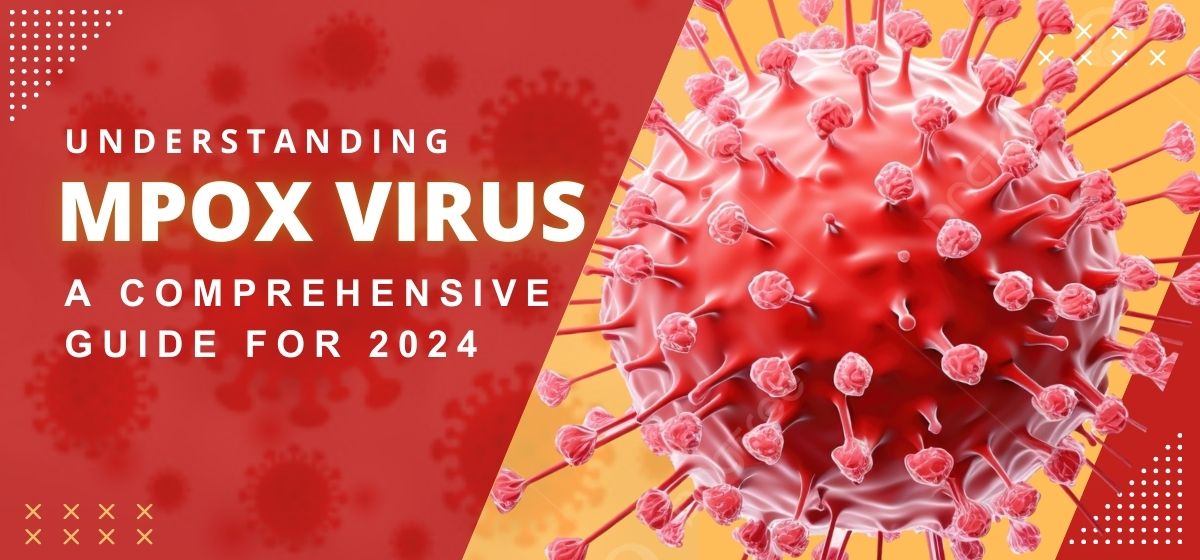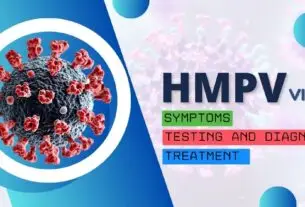Formerly called monkeypox, the Mpox virus has become one of the major public health concerns right now. After the recent outbreaks in various regions, including regions in India, there’s an urgent need for understanding and widespread awareness about this virus. Originally recognized in 1958 among several lab monkeys, this virus was earlier confined to Africa. But lately, mpox has dramatically spread worldwide, causing havoc among many individuals across the globe.
In this blog, we’ll provide you with a detailed overview of the mpox virus, its symptoms, ways of transmission, treatment options, and more.
Common Symptoms of Mpox Virus
Generally, the symptoms of the mpox virus appear within 7 to 14 days after being exposed to this condition. Initially, it feels like any other viral infection and leads to symptoms, like:
- Chills
- Fever
- Swollen Lymph Nodes
- Headache
- Muscle Aches
- Fatigue
- Muscle Aches
After these initial symptoms, a significant rash develops that indicates a mpox diagnosis.
What Makes Mpox Different from Other Similar Conditions
Here are some common factors that distinguish mpox from other viral conditions, like chickenpox, smallpox, and some influenza strains.
Some major distinguishing factors include:
- Rash Development: If you notice mpox rash after general viral infection symptoms, it differentiates this condition from others. Although smallpox also has similar lesions, the development and appearance timeline is different.
- Lymphadenopathy: Inflammation of lymph nodes is a major sign of mpox and is not visible during common viral infections or chickenpox.
Stages of the Rash Appearance
- Macules: In this initial stage, the rash starts with red, flat spots on the skin.
- Papules: Now, macules form into raised bumps on the skin.
- Vesicles: It contains fluid-filled blisters after the formation of papules.
- Pustules: This stage occurs when vesicles evolve to form pus-filled lesions that are quite painful.
- Crusts: Finally, the pustules crust over and start falling off leading to skin healing.
Doctors pay attention to these stages of the rash, as it’s important to confirm the mpox diagnosis.
Mpox Transmission
A. Modes of Transmission
Here are some common ways how pox transmits:
- Direct Contact: Personal, close interactions with infected persons, especially skin-to-skin contact with bodily fluids or lesions, are common transmission routes.
- Contaminated Materials: This virus survives on surfaces, bedding, or clothing that come in contact with an infected individual. This is a mode of indirect transmission.
- Respiratory Droplets: With prolonged face-to-face contact, one may get infected with inhalation of virus-containing respiratory droplets.
B. Risk Factors for Mpox Infection
Specific conditions and demographics can increase the risk of mpox infection:
- Healthcare Workers: Healthcare workers who closely interact with infected individuals can face higher exposure risk.
- Travellers to Endemic Regions: People visiting regions that experience mpox outbreaks must take precautions.
- Individuals in Close Contact: Generally, family members and others who come in close contact with infected patients are at greater risk.
Is Mpox Deadly?
Although mpox is not as lethal as smallpox, it can still lead to serious health issues. As per historical data, the mortality rate varies as per the virus’ strain. For instance, the West African strain has a lower mortality rate (approx. 1%) compared to the Congo Basin strain which has around 10% mortality rate.
- Factors Causing Disease Severity: Several factors can influence the severity of mpox:
- Age: Younger people, especially kids, are highly vulnerable to the severity of this condition.
- Access to Healthcare: Prompt healthcare intervention can lead to infection in individuals.
- Immunocompromised Individuals: People with weak immune systems, due to cancer or HIV, are likely to experience more severe complications.
Mpox Treatment Options
A. Current Treatment Protocols
As for now, there is no specific treatment available for mpox. However supportive and symptomatic care is vital during this condition. It includes:
- Hydration: A patient must consume enough water to stay hydrated during this infection.
- Pain Management: Doctors prescribe analgesics to alleviate symptoms, like rash and fever.
- Monitoring for Secondary Infections: Doctors monitor patients for signs of other secondary infections that can further worsen the condition.
B. Management and Supportive Care
For supportive care, here are some measures that healthcare providers take:
Nutritional Support: Healthcare providers take care of proper nutrition of patients for quick recovery. They even make certain dietary adjustments for improvement.
Isolation: Patients are recommended to stay isolated to prevent further spread of the virus until lesions are no longer infectious.
Mpox Vaccine: Prevention Strategies
Proper vaccination is vital to prevent mpox infection. Currently, the JYNNEOS vaccine, which is an attenuated live virus vaccine, is available for preventing individuals from mpox.
Vaccination Recommendations
According to reputed health authorities, vaccination is suggested for patients at high risk, such as:
- Travelers: People who are planning visit to places with mpox outbreaks. Such people need to consider taking vaccinations.
- Close Contacts: Patients with close contact with infected people must also go for timely vaccination.
- Healthcare Workers: People who are directly involved in taking care of patients suffering from mpox.
According to studies, the JYNNEOS vaccine has proven to be highly effective when it comes to preventing MPox – especially when it’s administered before MPox exposure. It can prevent vaccinated individuals from mpox virus and its severity.
Current Mpox Cases
As of 2024, recently health authorities from various parts of the globe, including India, have reported an increasing trend in the cases of mpox. With regular analysis and monitoring of case numbers, it is vital to understand the dynamics of the mpox outbreak.
With the rising number of mpox cases, there are several challenges that healthcare systems have to handle. Lately, public health officials are highlighting the significance of early detection, education, and vaccination for mitigating the severe impact of outbreaks on several communities.
Conclusion
The Mpox virus poses a significant health risk to infected individuals and needs collective action and awareness. With knowledge of its symptoms, treatment options, transmission modes, and vaccination strategies, we can effectively control the spreading of mpox. So, individuals must stay aware and well-informed of these conditions to stay proactive in preventing this condition. With timely vaccination and fostering awareness, we can together work on protecting ourselves from this virus.



